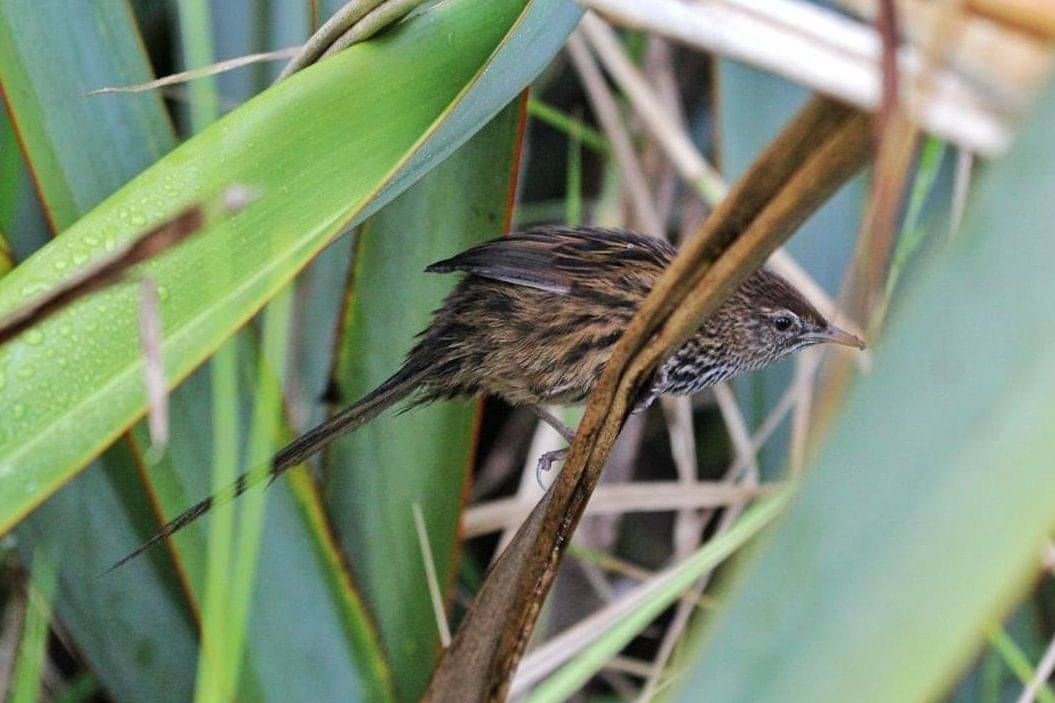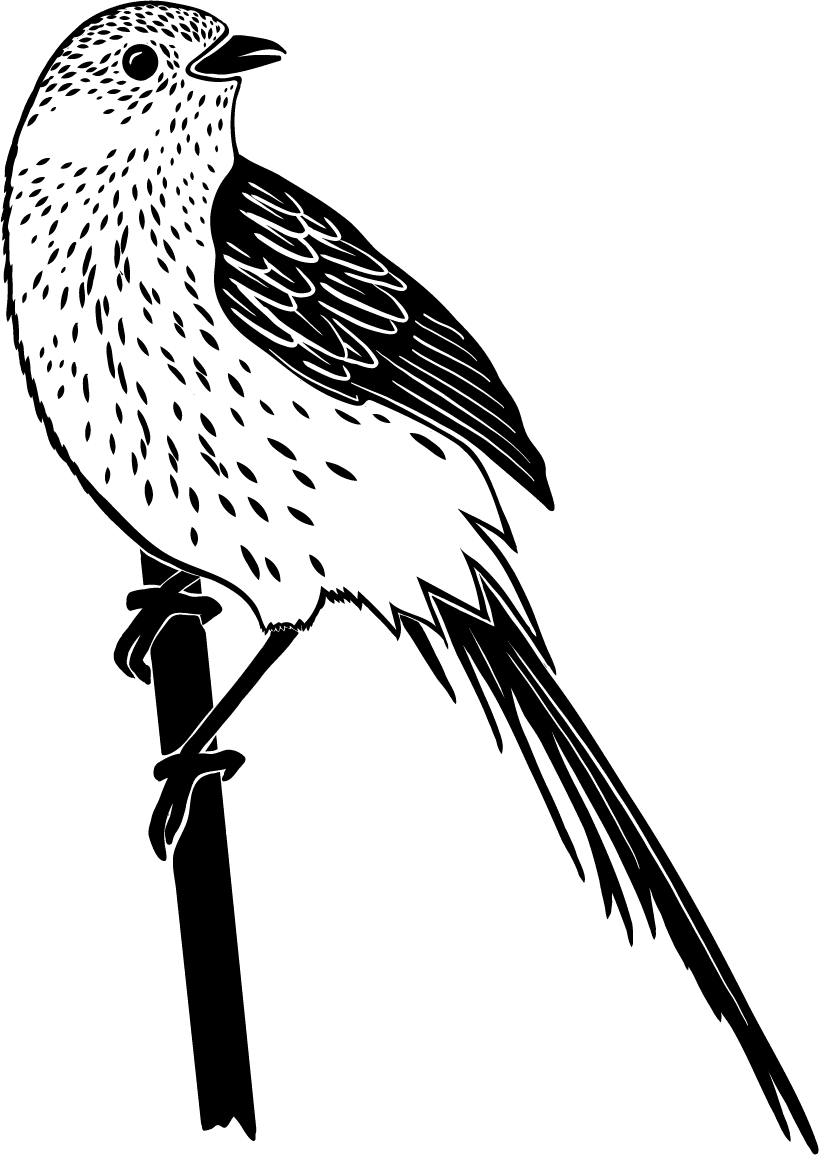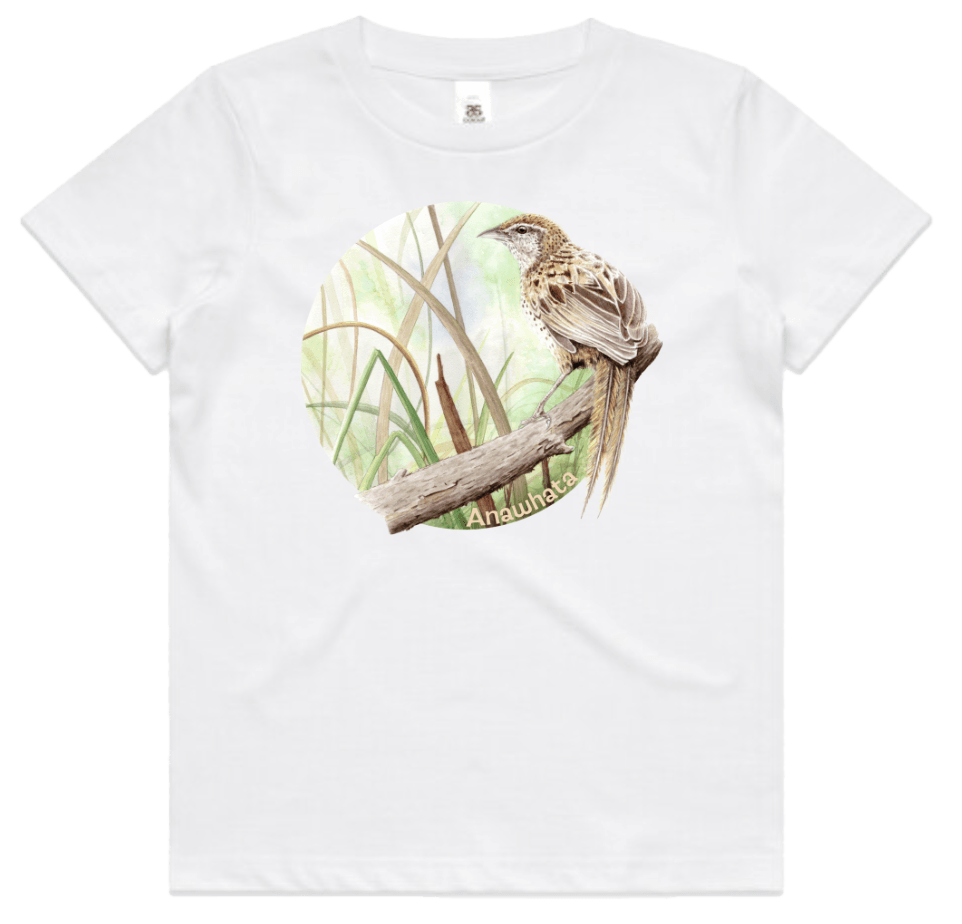Mātātā / Fern bird

Mātātā: Aotearoa’s feathered phantom
Local populations of the fern bird are lost when wetlands are drained and converted to pasture, and compounded by predation by animal pests.
Habitat: Dense vegetation in wetlands, swamps, saltmarshes and reedbeds across Aotearoa.
Breeding season: September - February.
Diet: Insects like caterpillars, beetles, flies, moths and spiders, and occasionally small fruit and seeds.
What’s their superpower?
Blink and you’ll miss them. As kings of camouflage, mātātā (aka fernbird) may be heard but are rarely seen. Their streaky brown feathers, ragged fern-like tails (which mimic dead fern and other foliage) and stealth movements make them pros at dodging predators and patrolling for prey.
Why do we need them?
They’re the perfect barometer of wetland health. An abundance of mātātā means a thriving habitat with clean water, dense vegetation and plenty of insects. Plus, by feeding on the likes of caterpillars, beetles and flies, they also help keep wetland ecosystems balanced.
Did you know?
More like a mouse than a bird, mātātā live their lives almost entirely on foot. When they do take to the sky they don’t last long, flying for around the length of a school bus and no higher than a garden fence. Instead, they prefer to spend their days searching through tangled scrub for tasty terrestrial snacks.
Fascinating facts
Tail for days: Nearly half their body length is tail, making up for their surprisingly short wings. It helps them balance and stay camouflaged as they scurry about their day.
Shy but curious: While mātātā may be shy, they’re also nosy little ninjas. Mimic their call by clicking your fingers and they may pop out to investigate before vanishing back into the scrub.
Always in range: These swampland singers stay with their mates throughout the breeding season, keeping in contact with soft utick calls that help them keep track of one another while they creep through scrub.
Masters of micro-territories: Mātātā rarely wander far with most never more than 800m from home, though some do venture further.
Wetland oracles: In Māori tradition, mātātā were revered as manu tohu or wise birds. Their calls were believed to signal changes in everything from weather to health.
Masters of making do: They can make a home almost anywhere there’s dense, low vegetation from wetlands beside busy motorways to higher-altitude scrublands.
Protectors of their patch: When DOC was first set up, their distinctive calls helped survey teams identify which habitats were still thriving and which needed help. This played an important part in shaping stronger protection for NZ’s wetlands.


Conservation corner
Mātātā are classed as At Risk – Declining by DOC. While living in wetlands and other natural areas of dense vegetation, their biggest threat is habitat loss. That’s because 90% of NZ’s wetlands have been drained or damaged. Introduced predators like rats, stoats, cats and dogs also put nests and adult birds at risk. But there’s hope. By trapping pests, restoring wetlands, and moving birds to safer places, some mātātā populations are starting to bounce back.
How you can help
Help protect and restore wetlands by supporting local conservation projects.
Keep dogs under control near wetlands. Even playful dogs can disturb or harm wildlife.
Keep cats inside at night and have them desexed to reduce predator numbers.
Plant native trees and shrubs like flax and mānuka that provide food and shelter for mātātā.
Set traps in your backyard for pests like rats and stoats.
Help us to help the Mātātā / Fern bird
Fernbirds have declined significantly since humans began draining wetlands. They are now classed globally as at risk, declining.
With over 75% of our indigenous species at risk of extinction*, the Pest Free Waitākere Ranges Alliance is raising funds to help defend the many special species of the Waitākere Ranges.
Thank you for your support of this secretive wetland bird!
Anawhata / Mātātā / Fernbird
Supporter Gear
Support the conservation efforts of Pest Free Waitākere Ranges Alliance!
By shopping with us, you're contributing to the protection and preservation of our ngahere, and supporting our vision of a restored and thriving Waitākere Ranges.
Choose from a range of clothing and accessories printed with our exclusive design by local artist Matt Coates featuring Anawhata's special species – the Mātātā / Fernbird.
Find out more
Image credits: Fern by Toby Hall on Unsplash • Mātātā Fern bird by Jackie Geux • Mātātā Fernbird by Charlie Thomas

